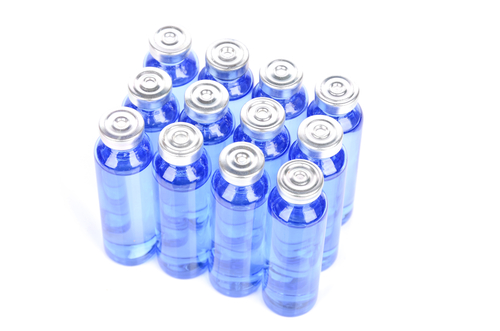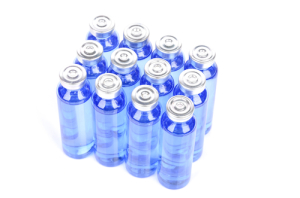Having previously discussed the fundamentals of biotechnology, its impact on the production of medicines and the structure of these protein-based medicines, we now move on to some of the practical aspects of managing therapeutic proteins. In this post we begin our exploration of the storage and handling of biopharmaceuticals. As noted before, because proteins represent the overwhelming majority of products from the pharmaceutical biotechnology sector, the terms protein and biopharmaceutical will be used interchangeably throughout this post.
Putting things into context, our last post entitled, ‘Biopharmaceutical Protein Structure – Part 2‘, made reference to the fact that proteins are profoundly delicate molecules. This situation arises from a combination of factors including their large size, structural complexity and the relative modesty of the stabilizing forces responsible for maintaining their structure and shape.
[There is a] well established relationship between protein shape and protein functionKuhlmann & Covic, 2006
These factors taken together are of notable significance given the well established relationship between protein shape and protein function (Kuhlmann & Covic, 2006: 4). This relationship can be summarized as follows, “Protein Shape dictates Protein Function (Activity)“. Put another way, “A Change in Protein Shape (or Loss of shape) equals A Change in Protein Activity (or Loss of Activity)“.
If we consider both the extreme structural fragility of proteins (Crommelin, 2003: 74) and the inextricable link between loss of protein structure and loss of protein function, it becomes obvious why great pains are endured in an effort to store, handle and transport protein-based medicines under ideal conditions. Alternatively, if we do not store them under optimal conditions, we jeopardize their already fragile structural integrity and if integrity is lost; not only will treatment effectiveness be compromised, but worse, patients could potentially be exposed to dangerous degradation products of these altered proteins.
Share this Post
…great pains are endured in an effort to store, handle and transport protein-based medicines under ideal conditions.
Moreover, because these medicines (proteins) are so delicate, the overwhelming majority cannot tolerate exposure to the harsh conditions found within the human digestive tract. (Crommelin & Jiskoot 2008: 10) In much the same way that meat which is predominantly protein, is digested (broken into smaller more easily absorbed fragments) by acid in the gut, therapeutic proteins would meet the same fate, bringing them to an unintended and untimely end if consumed by mouth. As a consequence, they are formulated for intravenous (injection into veins), subcutaneous (injection under the skin) or other parenteral routes of administration that circumvent passage through the gut. This being the case, they have to be stored, transported or reconstituted in liquid form which in and of itself, is inherently more unstable than tablet or capsule form. This further intimates the need for strict control of storage conditions.
In the upcoming posts, we will explore in greater detail some specific factors which ought to be rigidly controlled if proteins are to be stored and handled satisfactorily. While not exhaustive, the following list includes some of the more critical factors which will be addresed. These include, Temperature, Exposure to Solutes and Diluents, pH (Acid / Base Balance) and Exposure to Shearing Forces (Crommelin 2003: 75).
References
- Crommelin, D.J.A. (2003) ‘Differences between Biopharmaceuticals and Low-molecular-weight Pharmaceuticals’, European Journal of Hospital Pharmacy, 1 (2003), pp. 74-76.
- Crommelin, D.J.A. & Jiskoot, W. (2008) ‘Chapter 2 – What Makes Protein Drugs Different: Some Considerations on Shifting Paradigms in Pharmacy’. In: Schellekens, H. & Vulto, A.G. (ed.). Biopharmaceuticals for European Hospital Pharmacists. Mol, Belgium: Pharma Publishing and Media Europe, pp. 8-10.
- Kuhlmann, M. & Covic, A. (2006) ‘The Protein Science of Biosimilars’, Nephrology Dialysis Transplant (2006) 21 [Suppl 5], pp. 4-8.
Share this Post



